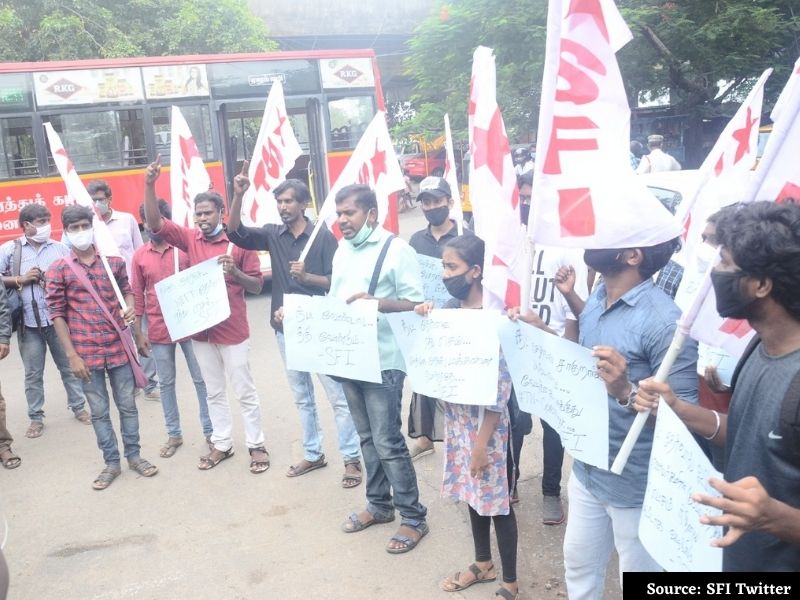-Baishali Mukherjee
The Students’ Federation of India (SFI), the student wing of the Communist Party of India-Marxist (CPI-M), has decided to hold a massive protest on January 27 against the declining quality of school education in West Bengal, as highlighted in a recent report by the central government. Following the march to ‘Bikash Bhavan’ an SFI delegation will submit a draft school education policy to the state education minister and hand over a symbolic marksheet to the State School Education Department, assigning it a score of zero out of 10.
On January 11, Debanjan Dey, the state secretary of SFI in West Bengal, said, “On January 27, SFI will organize a march to ‘Bikash Bhavan’ (the headquarters of the State School Education Department) in Salt Lake, on the northern outskirts of Kolkata.”
“The central report states that a total of 8,000 state-run and state-aided schools in West Bengal have been shut down. Instead of seeking solutions, the state education minister announced the merger of various state-run schools, which will further reduce the number of such schools. Therefore, we have decided to organize a march to ‘Bikash Bhavan’ on January 27 to register our protest on these issues,” he added.
Dey also informed the media that state-aided schools are charging additional fees after the state government stopped providing subsidies. “On one hand, the state government is organizing ‘Student Week’ to extract funds, while on the other, there are no funds to improve the infrastructure of school education. Crores of rupees are being spent on honoring celebrities,” he alleged.
In March, 2023, the state government decided to shut down 6,845 primary and 1,362 higher primary schools. Government and government-aided schools located in the backward districts of Purulia, Bankura, Birbhum, Jhargram, Murshidabad and West Midnapore downed shutters after an education ministry report revealed that they had less than 30 students on their muster rolls. On average, these schools had 17-20 students. Moreover, 3,254 schools had no students at all, while 6,366 schools had only one teacher. However, the total number of full-time teachers in these schools was 19,083 plus 1,181 ad hoc teachers.
The number of students from these schools plunged after the 99-weeks lockdown of education institutions in the state which was way above the national average of 82 weeks. According to the education ministry report, during the pandemic, 28 percent of pupils in government-run primary schools in West Bengal became “totally disconnected from academic activities” as many families could not afford smartphones because of low household incomes. The one-time grant of Rs.250000 after qualifying class X board exam and Rs. 30,000 after qualifying class XII board exam, awarded to BPL (below poverty line) households was largely used to get their daughters married. Interestingly, according to the Sample Registration System (SRS)-Statistical Report 2020, in West Bengal the percentage of women marrying below 18 years of age is 4.7 percent, between 18-20 years of age 50.2 percent against the national average of 1.9 percent and 26.7 percent respectively. Unsurprisingly, only 6,98,628 (.6 million) candidates wrote the 2023 class X state board exam against 1.09 million in 2022.
